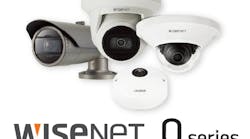Total situational awareness on campus is critical for the safety of the staff and student body. Everything from video surveillance cameras, to digital signage, to mobile computers plays a part in equipping teachers and campus safety officers with essential tools for the classroom. When deployed strategically, these technologies create an integrated communications system that can improve safety and efficiency, lower costs and improve services provided by educators.
When serious situations arise, digital signage can play a valuable role in communicating important information campus-wide. By having signage throughout an institution, schools are able to broadcast important information such as extreme weather conditions or notify staff and students of a potential threat on campus. Schools susceptible to dangerous weather, for example, need an outdoor solution that can withstand extreme heat or cold environments.
Digital signage provides a quick and efficient way to convey as much information as possible in both indoor and outdoor settings.
In classroom environments — whether a K-12 or university campus — it is difficult for administrators, teachers and campus security officials to know what is going on at all times in every classroom or building. Video surveillance plays an important role in these situations and is the most effective tool in monitoring what is going on at any given time throughout a campus.
IP wireless camera systems are often used because they integrate seamlessly with the existing IP network and are easy to install. With IP video surveillance, administrators and security professionals both on site and off have the ability to access video footage at any time. In the event of an emergency, a 911 call center or mobile command center could be given access to video footage, providing them with the critical data they need to see what is happening in real-time. After an incident, video footage is a critical tool for police and used as evidence in court proceedings.
Tablets are also being used as an effective remote access solution. Roaming security and campus safety officers can now be equipped with control room capabilities in the palms of their hands, allowing them quick and easy access to video feeds from any camera around campus. This improves overall awareness and campus safety. It also provides an efficient and easy way to maintain communication at all times.
Classroom audio solutions — traditionally used as a tool to help teachers to project their voice without having to strain and ensure that all students can hear what they are saying — are also equipped with a panic button that acts as a notification device to alert administrators or security that there is a problem. When integrated with video surveillance cameras, this notification will automatically turn on a camera in the classroom or other location and immediately provide video and audio feeds to the office, campus emergency center or mobile device.
On their own, these technologies are useful tools for educators. But as a fully integrated system, they create a powerful solution that helps schools achieve campus-wide situational awareness. By taking a solutions-oriented approach, a school can be sure they’re investing in an integrated system that works together to drive value greater than the sum of its parts and most importantly, improves the safety and security for administrators, teachers and students.
Greg Peratt is Senior Director of the Video Solutions Integration Team for the Panasonic System Communications Company of North America. Request more info on Panasonic at www.securityinfowatch.com/10214586.



